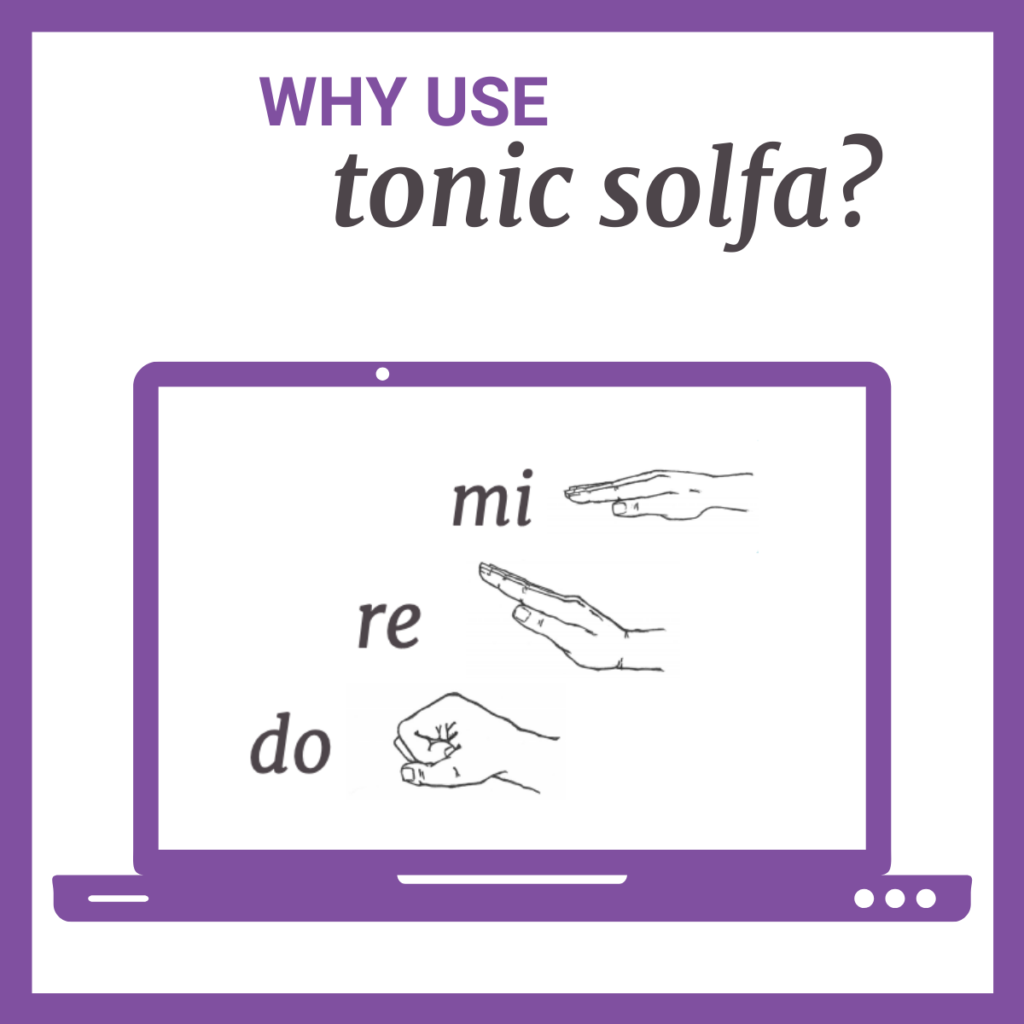Why Use (Tonic) Solfa?
Everything you need to strengthen your musicianship skills
What is Tonic Solfa?
Tonic Solfa or Moveable do Solfa is a system of note naming in which every note within a scale is given a name based on its relationship to the other notes within that key.
This is called tonic, functional or moveable do solfa as each name represents the function of that particular note (for example the function of ti – the leading note – is to lead to do and so on).

Solfa shows us how to spell music – it’s a system for that in the same way the alphabet is for language.
Music, unlike other abstract universal languages e.g. maths – is most meaningful when actually experienced – therefore we experience music and express music as sound, hence we SING (and play too of course).
Solfa enables us to foster music language skills and true music literacy. This is the ability to see what you hear (as if it were written on a score) and hear what you see (hear the notes you see on a staff) – Inner Hearing.
Benefits
- tonic solfa gives you a language to use to “spell” music you see or hear
- it helps you to hear music internally (in your head with NO external stimulation) and understand what you hear
- it allows you to interpret and name each note’s function in a given key and in relation to one another. (This is REGARDLESS of key, clef or instrument. In other words, do is ALWAYS the tonic of a Major key, so is ALWAYS the dominant in a Major key, la is ALWAYS the tonic of a minor key etc.)
- it allows you to experience music – not just know it at a practical, intellectual or academic level
- it gives something concrete to hear when Inner Hearing
- it allows for the integration of the aural, theoretical, spatial and kinaesthetic learning styles in an approach to learning the musical language (the use of Handsigns)
- it improves recognition of intervals and strengthens the understanding of music theory
- solfa syllables were designed to be sung and to help with staying in tune
- using tonic solfa – as opposed to lyrics of songs for instance – means patterns, intervals and phrases become more clear
Example from page 8 of the Musicianship & Aural Training for the Secondary School Level 1 books:

Example from page 9 of the Musicianship & Aural Training for the Secondary School Level 1 books:

Example from page 59 of the Musicianship & Aural Training for the Secondary School Level 2 books:

Example from page 114 of the Musicianship & Aural Training for the Secondary School Level 3 books:

Important note:
To truly and profoundly UNDERSTAND music, musicians need an absolute and a relative system for referring to pitch – Letter Names is our absolute system (therefore we DO NOT need fixed do solfa as well – if C is always do then let’s just call it C) and tonic or movable do solfa is our relative system.
Read on for more….
It is widely believed that Guido of Arezzo (an Italian music theorist and Benedictine monk from the Medieval era) was the first person to use solfa syllables in the 11th century. He is also thought to be the inventor of modern staff notation.
He created these new techniques to allow musicians to more quickly learn Gregorian Chant (the unaccompanied single line chant used in the church at the time). Originally he used the syllables: ut re mi fa so la taken from the syllables at the start the first six phrases of a hymn that was well known at the time: “Ut queant laxis”.
What we now know as tonic solfa or movable do solfa was turned into a more useful and accessible teaching technique by Sarah Ann Glover in the 18th century and was then further developed by John Curwen a century later. It was at this time the Handsigns came into common use to support the learning of music notes. In the 20th century, Zoltan Kodály embedded these teaching techniques into a teaching method sometimes known as the Kodály Method.

